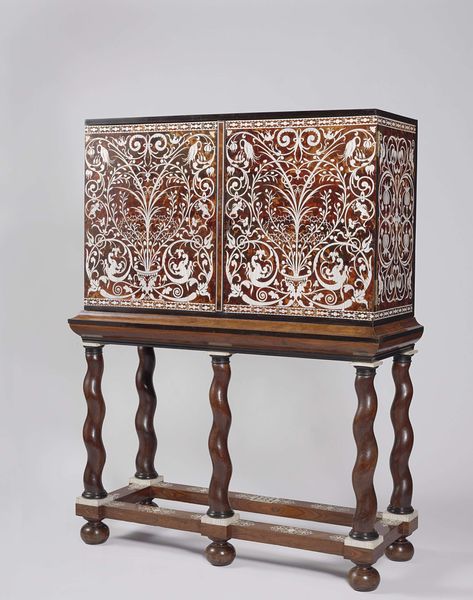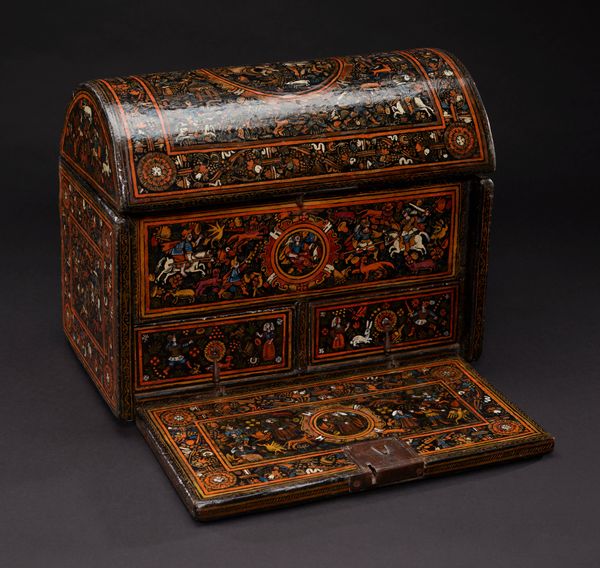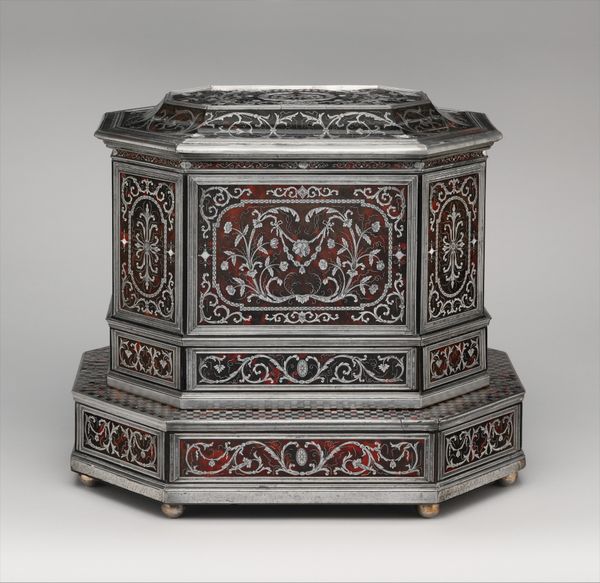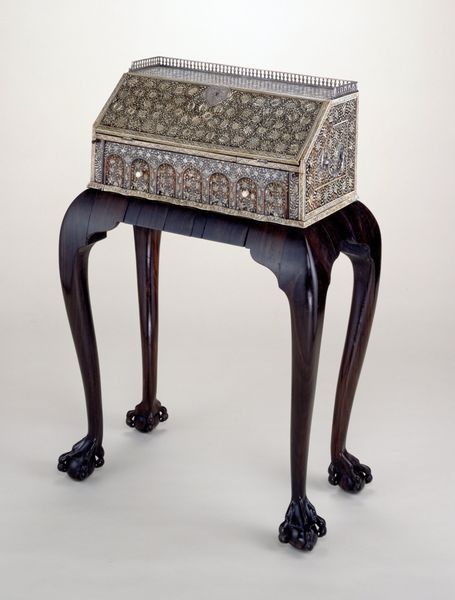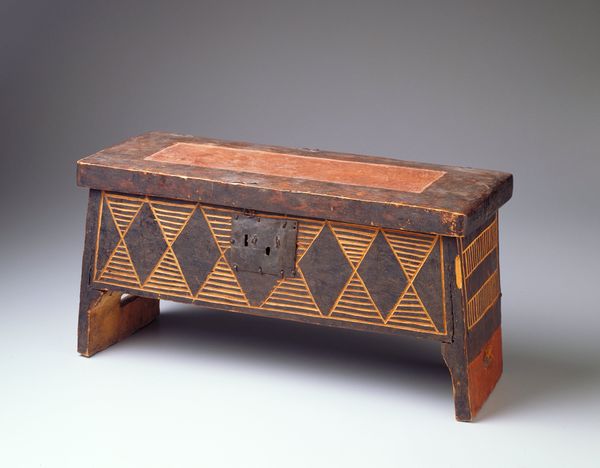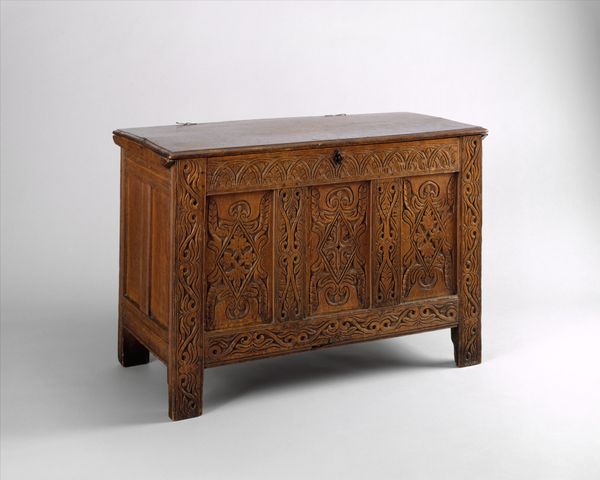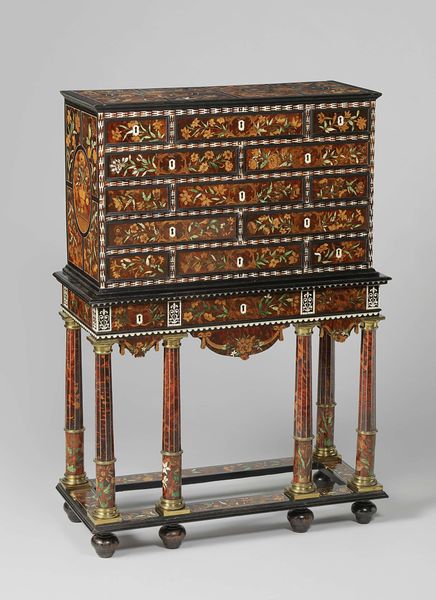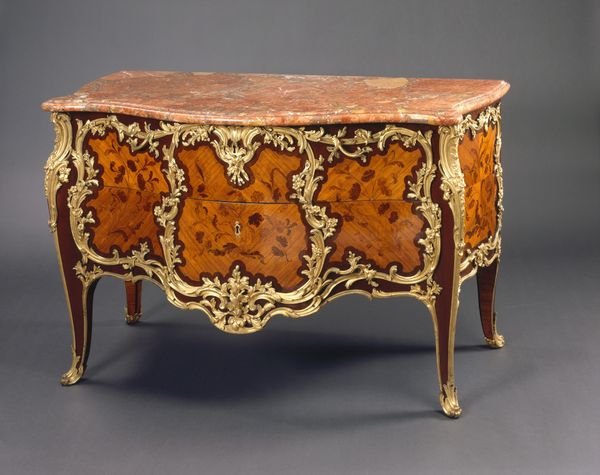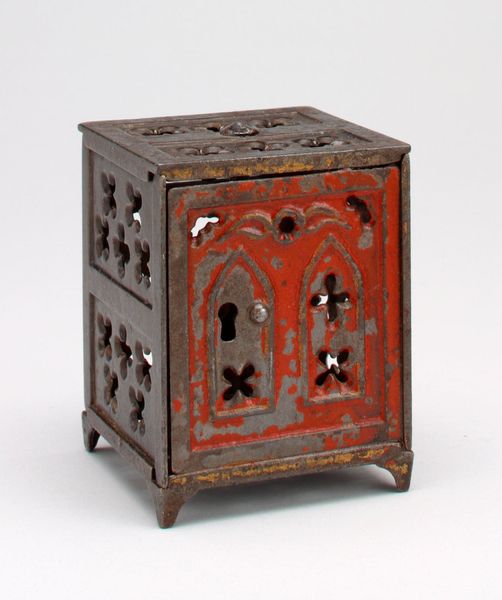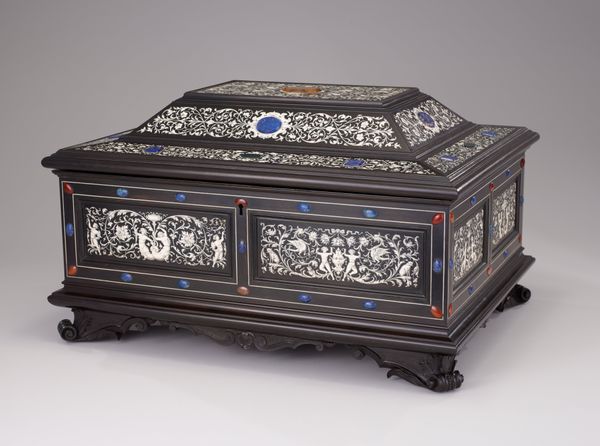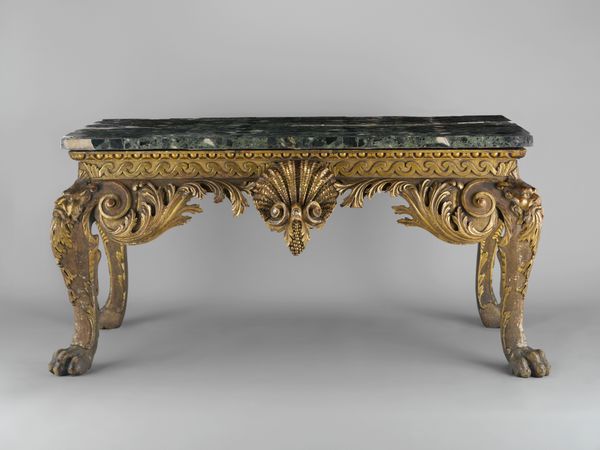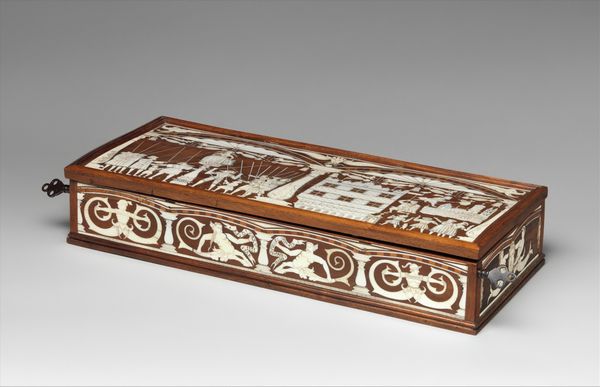
carving, wood
#
carving
#
stoneware
#
wood
#
islamic-art
#
decorative-art
Dimensions: 12 1/2 x 9 1/4 x 16 1/2 in. (31.75 x 23.5 x 41.91 cm) (closed)
Copyright: Public Domain
This anonymous Storage Chest captivates with its calculated geometry and rich materiality. The contrasting dark wood and iridescent mother-of-pearl create a striking visual effect. Notice the intricate patterns—octagons, diamonds, and triangles—each meticulously inlaid. These shapes create a sense of order and balance, yet the slight variations in the material introduce a subtle tension. The anonymous artist plays with symmetry, dividing the surface into distinct fields of ornamentation. The juxtaposition of geometric precision and organic variation destabilizes any singular reading. Consider how these formal choices engage with broader cultural codes. The geometric patterns and the use of precious materials evoke ideas of luxury and status, while the overall symmetry suggests a deeper philosophical quest for harmony. This chest invites us to reflect on the relationship between form and function, aesthetics and ideology, in the realm of decorative arts.
Comments
minneapolisinstituteofart almost 2 years ago
⋮
Carved and inlaid woodwork was produced throughout Ottoman history. Fifteenth and sixteenth century examples were made of walnut or ebony inlaid with ivory, but mother-of-pearl was added to the repertoire during the 1550's and tortoiseshell began to be widely used at the end of that century. After 1600, mother-of-pearl and tortoiseshell used in combination became extremely popular in luxury furniture, storage chests, writing boxes, and bookstands. Similar materials and techniques were used in decorating doors, window shutters, and cupboards in secular and religious buildings. This splendid storage chest reflects a classic Ottoman shape and its sumptuous veneer and inlay, comprised of expensive, exotic materials is in perfect keeping with aristocratic taste. The geometric makeup of the pattern, with its separation into separate panels and the combination of rectilinear and curvilinear forms is characteristics of much Islamic decorative art.
Join the conversation
Join millions of artists and users on Artera today and experience the ultimate creative platform.

